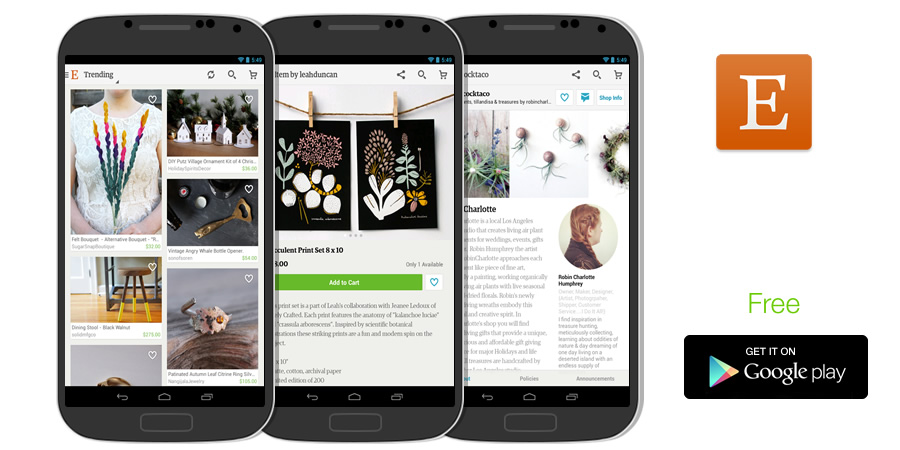
Mobile Commerce: What Fashion Retailers Need to Know.
Fashion retailers, by virtue of being worldwide trendsetters have taken the initiative and are shifting from e-commerce to m-commerce. With consumer attention constantly centred on mobile devices (Claussen et al., 2014) the option to cater for such a huge audience should not be missed. Many online retailers have developed applications to house their company products and display them to consumers in a fast and interactive way. Almost all fashion brands and retailers are expected to have an application nowadays, anything from brand updates to new releases, to the latest social media trends need to be instantaneous and accessible to the consumer. So why should fashion brands walk the mobile catwalk?
What can fashion brands using m-commerce achieve?
- Increased Conversion.
- Improving brand awareness.
- Enhancing communication platforms.
- Providing on the go purchasing.
- Increasing traffic.
Fashion retailers need to know that there are three different stages to mobile activity when it comes to finding a item – browsing, researching and purchasing (Hew, 2016). Mobile commerce excels in the first two stages (Wang et al., 2016), helping consumers browse their choices of products enabling them to fill up idle moments with product research.
There are 3 main ways how mobile commerce excels in giving fashion retailers the advantage in capturing consumer attention:
Push Notifications
These are text message style pop-ups that keep you instantly informed on application updates, there is a choice to turn these off on most m-commerce applications as it can be overwhelming in some cases. With email opening rates slowly declining (Sahni et al., 2016) push notifications are appealing to fashion retailers that want to keep their customers informed with the right information but not overburden their view. Consumers are seeming to be accepting of push notifications, a study by Localytics shows that e-commerce has been the most successful area in mobile purchasing through implementing push notifications and holds the highest response rate.
Geo-Fencing
This allows your mobile device to provide exactly where you are so that applications can send information on location-specific deals and offers. For fashion retailers and luxury brands this tool can complement both online and offline operations. Burberry have taken the initiative and launched geo-fenced store in Soho that advertises products to passers by and gives their sales assistants customer information so they can identify returning customers.
Personalisation
Fashion retailers can capitalise on their application being downloaded by giving the consumer options to integrate social media accounts to the application in turn giving them a faster sign up option. Retailers can link social media accounts to applications and share purchase information, viewed items and favourited pictures if the user accepts. This then opens the door to multi-channel advertising as the activity of one platform is now advertised across a multitude of viewing options.
Now lets have a look at some successful fashion retailers that have moved over to mobile commerce:
In India the fashion retailer Myntra completely removed their desktop website and took their whole company to mobile commerce. In 2015 the retailer saw 90% of traffic come from mobile devices and over 70% of sales generated from mobile purchases. Statistics like this prove that the mobile revolution is extremely powerful to fashion retailers and increased engagement is even bigger through applications than ever before.
Etsy is another great example of a fashion retailer using mobile commerce to advertise and sell goods. In 2015 the retailer saw a huge increase in visitor traffic of 19% from the years 2013-15, with 53% of visitors accessing the retailer through mobile devices. The application offers a simple layout with large thumbnails representing products giving the user an efficient way of viewing items without having to zoom in.
Etsy’s mobile platform shows that a niche market similar to the way luxury brands are viewed can flourish in the mobile world, as long as the shopping experience is positive, well presented and simple to use. Applications such as this also urge users to create a community which helps other users decide on products and make recommendations that can be push notified making it even easier for them to come to a conclusion and buy the items they want.
Implications
Although the benefits of a simple and more efficient method of retail purchasing are relatively clear mobile commerce does come with some implications:
- Privacy – With mobile transactions being conducted electronically through the device their is always associated privacy risks. If devices are lost, hacked or accessed without owner authority personal information can be found and transaction history can be located. This can pose a greater risk as the knowledge gained from transactional data can allow criminals the correct information to banking access.
- Security – Some retailers, mainly those that are newly developed and less well known to the general public can pose risks to user security. Transaction data after purchasing may be stored and if the retailer is less known or located in a country that has different legislation on data security who knows where the data will end up?
Recommendations
The article below looks at the multidimensional aspects of mobile commerce and the opportunities geo-fencing and location based services can provide to fashion retailers – http://www.inderscienceonline.com/doi/abs/10.1504/IJMC.2015.072055
The article below looks at 10 of the most recent trends hitting the mobile commerce market – http://www.mobilecommercedaily.com/10-new-trends-in-fashion-retail
References
Claussen, J., Essling, C. and Kretschmer, T. (2014). When less can be more – Setting technology levels in complementary goods markets. Academy of Management Proceedings, 2014(1), pp.119-138.
Hew, J, Lee, V, Ooi, K, Lin, B. (2016). Mobile social commerce: The booster for brand loyalty? Computers in Human Behaviour Volume. 59. pp. 142-154.
Sahni, N, Wheeler, S, Chintagunta, P. (2016). Personalisation in Email Marketing: The role of Non-Informative Advertising Content. Paper No. 16-14. pp. 113-128.
Wang, R, Malthouse, E, Krishnamurthi, L. (2016). How Mobile Shopping Affects Customer Purchase Behaviour: A Retailer’s Perspective. Developments in Marketing Science. pp. 703-704.

